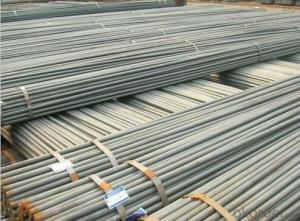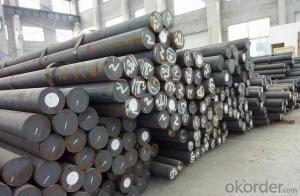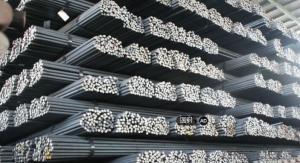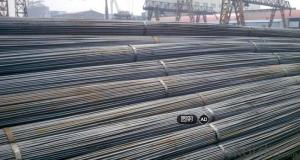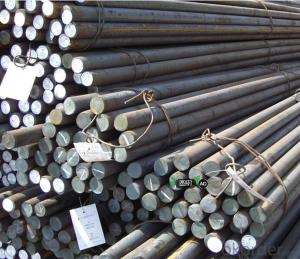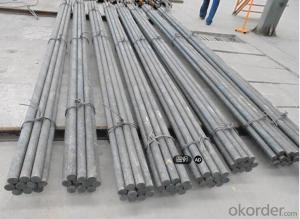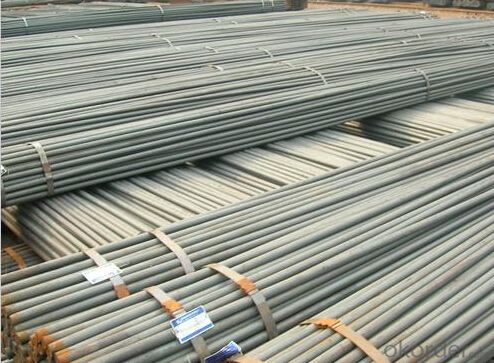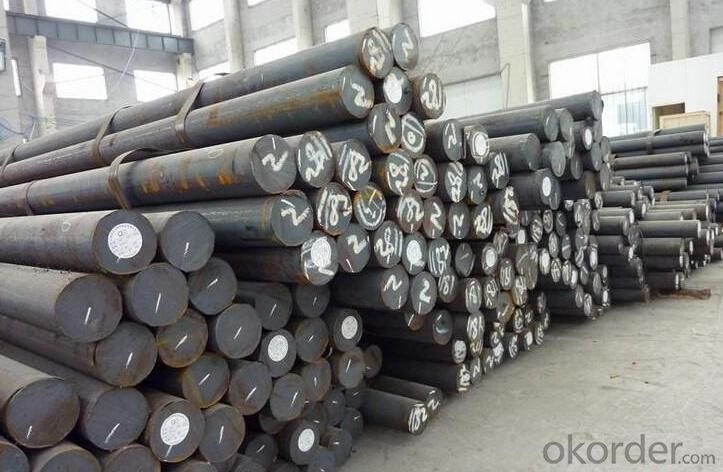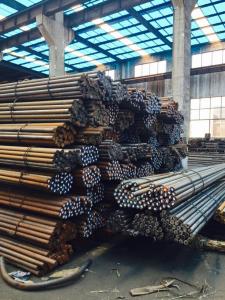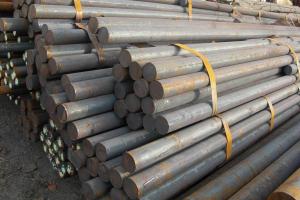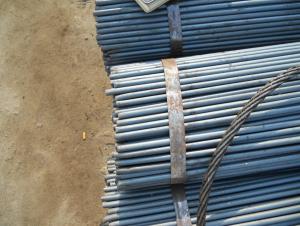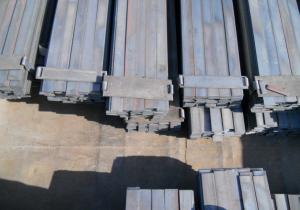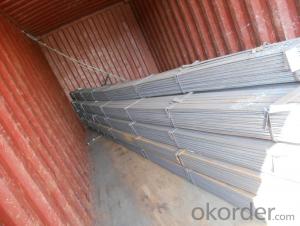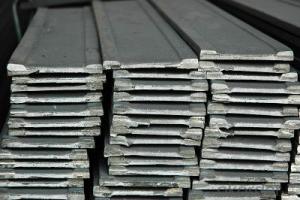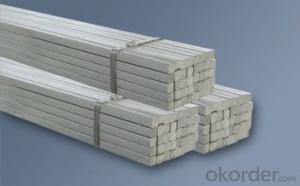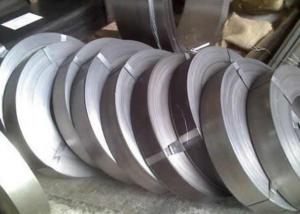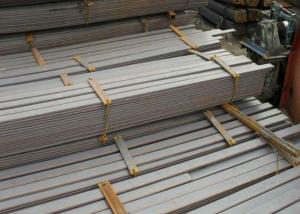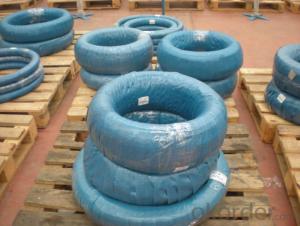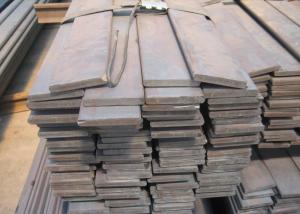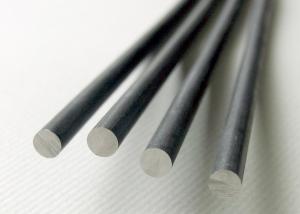Q345B Straight and Smooth Flat Steel Bar
- Loading Port:
- Qingdao
- Payment Terms:
- TT OR LC
- Min Order Qty:
- 5 m.t.
- Supply Capability:
- 100000 m.t./month
OKorder Service Pledge
Quality Product, Order Online Tracking, Timely Delivery
OKorder Financial Service
Credit Rating, Credit Services, Credit Purchasing
You Might Also Like
Specification
Type:
Carbon Steel,Spring Steel,Bearing Steel,Gear Steel,Deformed Steel,Stainless Steel,Alloy Steel
Shape:
Steel Coil,Steel Sheet,Steel Wire Rod,Steel Flat Bar,Steel Square Bar,Steel Angle,Steel Round Bar,Steel Billets
Technique:
Hot Rolled,Cold Rolled,Cold Drawn,ERW,Forged,Saw,Extruded,EFW,Spring
Surface Treatment:
Galvanized,Coated,Copper Coated,Color Coated,Oiled,Dry,Chromed Passivation,Polished,Bright,Black,PVDF Coated
Certification:
ISO,SGS,BV,IBR,RoHS,CE,API,BSI,UL
Thickness:
8-600mm
Width:
8-600mm
Length:
6-12m
Outer Diameter:
8-600mm
Net Weight:
100kg
Packaging:
seaworthy packaging
Q345B Straight and Smooth Flat Steel Bar
Detailed Information of Q345B Straight and Smooth Flat Steel Bar
| Name | Steel Round Bar |
| Shape | Round Bar/Square Bar/Flat Bar/Plate/Wire |
| Standard | GB/ASTM/SAE/AISI/DIN/JIS/EN/BS |
| Surface Treatment: | Black/Peeling/Polished/Machined |
| Delivery Condition: | Hot Rolled or Forged/Peeled or Black Surface |
| Test | SGS/UT 100% Elements Testing |
| Certificate: | ISO/Mill Certificate |
| Service: | 24 hours online service / |
| more than 20 years trading and manufacture | |
| Quality Assurance: | the third party inspection, such as SGS, BV, TUV…etc. is acceptable |
| Packaging Details: | Seaworthy Packaging or as per customer's packing instruction |
Product Overviews of Q345B Straight and Smooth Flat Steel Bar
| Product Name | Typical Grades | Diameter(mm) | Standard Adopted |
| Carbon Steel | 20 (1020/S20C/C22) | ||
| 40 (1040/S40C/C40) | Ø16-Ø300 | ||
| 45 (1045/S45C/C45) | |||
| Bearing Steel | GCr9 (51100/SUJ1) | ||
| GCr15 (52100/SUJ2/100Gr6) | Ø12-Ø250 | ||
| GCr9SiMn (A485-Gr.1/SUJ3) | GB/SAE/ | ||
| Cr-Mo Steel | 20Cr (5120/SCr420H/20Cr4) | JIS/DIN | |
| 40Cr (5140/SCr440/41Cr4) | Ø12-Ø250 | ||
| 42CrMo(4140/SCM440/42CrMo4) | |||
| Gear Steel | 20CrNiMo | ||
| 20CrMn(5115/SMnC420/20MnCr5) | Ø16-Ø600 | ||
| 20CrNiMo(8620/SNCM220/20CrMiMo2) |
Company Introduction of Q345B Straight and Smooth Flat Steel Bar
CNBM International Corporation is the most import and export platform of CNBM group(China National Building Material Group Corporation) ,which is a state-owned enterprise, ranked in 270th of Fortune Global 500 in 2015.
With its advantages, CNBM International are mainly concentrate on Cement, Glass, Iron and Steel, Ceramics industries and devotes herself for supplying high quality series of refractories as well as technical consultancies and logistics solution.
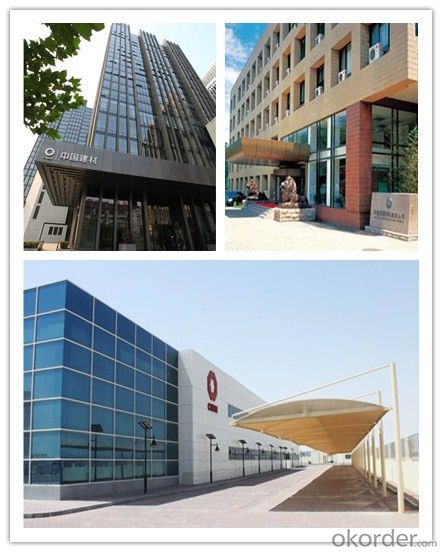
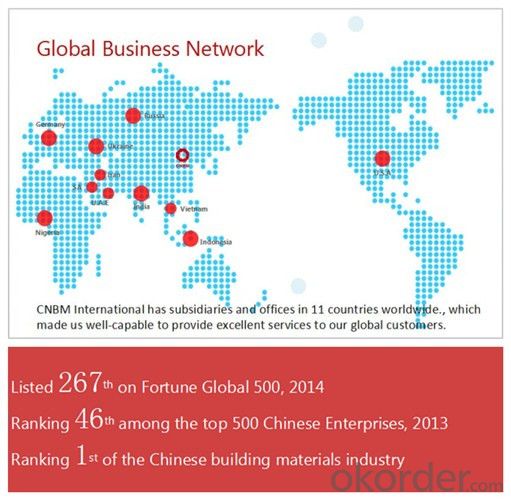
| After-sale service | l CNBM provides the services and support you need for every step of our cooperation. We’re the business partners you can trust; you can relax and get on with doing business. |
| l For any problem, please kindly contact us at any your convenient time, we’ll reply you in our first priority within 24 hours | |
| Advantages | l Industry experience over 20 years. |
| l Shipment of goods -More than 70 countries worldwide. | |
| l The most convenient transport and prompt delivery. | |
| l Competitive price with best service. | |
| l High technical production line with top quality products. | |
| l High reputation based on best quality products. | |
Packaging & Delivery of Q345B Straight and Smooth Flat Steel Bar
| Packaging Detail | Sea worthy packing /as per customer's packing instruction |
| Delivery Detail | 15 ~ 40 days after receiving the deposit |
Products Show
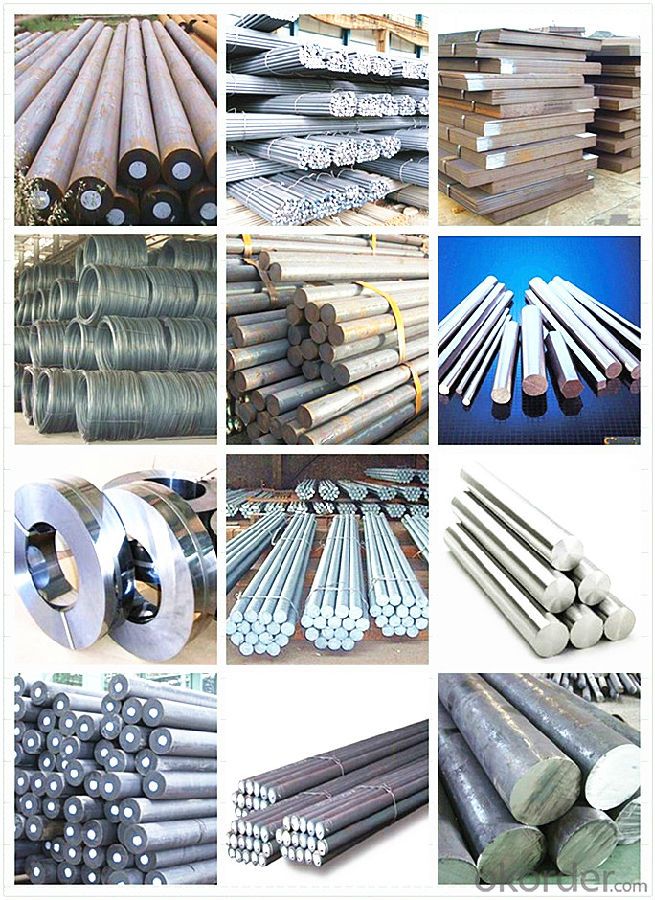
FAQ:
| Are you a trading company or manufacturer? | Manufacturer |
| What’s the MOQ? | 1000m2 |
| What’s your delivery time? | 15-20 days after downpayment received |
| Do you Accept OEM service? | Yes |
| what’s your delivery terms? | FOB/CFR/CIF |
| What's the Payment Terms? | 30% as deposit,70% before shipment by T/T |
| Western Union acceptable for small amount. | |
| L/C acceptable for large amount. | |
| Scrow ,Paybal,Alipay are also ok | |
| Why choose us? | Chose happens because of quality, then price, We can give you both. Additionally, we can also offer professional products inquiry, products knowledge train (for agents), smooth goods delivery, excellent customer solution proposals. |
| What's your available port of Shipment? | Main Port, China |
| What’s your featured services? | Our service formula: good quality+ good price+ good service=customer's trust |
| Where are your Market? | Covering more than 160 countries in the world |
- Q: What are the main applications of special steel in the defense aircraft?
- Special steels are used in defense aircraft for various critical applications such as manufacturing aircraft components, structures, and armor. These steels possess exceptional strength, durability, and resistance to corrosion and heat, making them suitable for challenging environments. Special steels find applications in components like landing gears, engine parts, rotor blades, and missile systems, where their high performance and reliability are essential for ensuring the safety and effectiveness of defense aircraft.
- Q: What are the different types of maraging steel?
- There are various types of maraging steel, including Maraging 200, Maraging 250, and Maraging 300.
- Q: How does special steel perform in high-pressure and high-temperature environments?
- Special steel is specifically engineered to excel in environments with high pressure and temperature. It possesses unique qualities that allow it to withstand extreme conditions without deforming, corroding, or failing. One of the main attributes of special steel is its exceptional strength. It is designed to have superior mechanical properties, including outstanding tensile strength. This enables it to resist the immense pressure exerted on it in high-pressure environments, ensuring that it maintains its structural integrity and does not buckle or collapse under the force. Furthermore, special steel is highly resistant to corrosion and oxidation, even at elevated temperatures. This resistance is crucial in high-temperature settings where hot gases, steam, or corrosive chemicals can cause regular steel to deteriorate rapidly. Special steel's ability to resist corrosion and oxidation ensures its longevity and reliability, making it an ideal choice for applications in challenging conditions. Additionally, special steel exhibits excellent heat resistance. It can endure extreme temperatures without compromising its mechanical properties, such as strength and hardness. This characteristic is vital in high-temperature environments where conventional steel would weaken, soften, or even melt. Special steel's capacity to maintain its structural stability even in extreme heat guarantees the safety and reliability of equipment and structures operating in such conditions. Moreover, special steel is renowned for its exceptional thermal conductivity. This property allows it to efficiently transfer heat away from the high-temperature environment, preventing localized hotspots and thermal stress. By effectively dissipating heat, special steel ensures the overall stability and performance of equipment and structures under high-pressure and high-temperature conditions. In conclusion, special steel excels in high-pressure and high-temperature environments due to its superior strength, resistance to corrosion and oxidation, heat resistance, and excellent thermal conductivity. These qualities make special steel a reliable and durable material for various applications, including power generation, oil and gas exploration, aerospace engineering, and many others.
- Q: What are the different surface finishing techniques used for special steel?
- Some of the different surface finishing techniques used for special steel include electroplating, powder coating, galvanizing, passivation, and mirror polishing.
- Q: What are the main characteristics of electrical steel?
- Electrical steel, also known as silicon steel or transformer steel, offers several key features that make it suitable for use in electrical appliances and power equipment. Firstly, it possesses a high magnetic permeability, enabling efficient magnetic flux conduction and reducing energy losses in transformers, motors, and generators. Secondly, electrical steel demonstrates low core loss, encompassing hysteresis loss and eddy current loss. Hysteresis loss refers to the dissipation of energy caused by the reversal of magnetic domains within the material, while eddy current loss arises from circulating currents induced by alternating magnetic fields. The low core loss property of electrical steel ensures high energy efficiency and minimizes heat generation in electrical devices. Another significant characteristic of electrical steel is its high electrical resistivity, which diminishes the magnitude of eddy currents and further reduces energy losses in electrical equipment. Additionally, it possesses a high saturation induction, denoting its ability to reach maximum magnetic flux density. This characteristic enables transformers and motors to function at higher magnetic flux densities, resulting in more compact and efficient designs. Moreover, electrical steel exhibits high mechanical strength, essential for withstanding the stresses and vibrations encountered in electrical devices. It also demonstrates good thermal conductivity, facilitating efficient heat dissipation and enhancing the overall performance and longevity of electrical equipment. In conclusion, electrical steel boasts high magnetic permeability, low core loss, high electrical resistivity, high saturation induction, high mechanical strength, and good thermal conductivity. These properties make it an ideal material for various electrical applications, offering efficiency, reliability, and performance in power generation, transmission, and utilization.
- Q: How is special steel used in the production of aircraft landing gear?
- Special steel is widely used in the production of aircraft landing gear due to its exceptional mechanical properties and durability. The landing gear is a critical component of an aircraft that supports its weight during takeoff, landing, and ground operations. It must withstand immense forces, impact loads, and harsh environmental conditions. Special steel, such as high-strength low-alloy (HSLA) steel or alloy steel, is specifically chosen for its superior strength-to-weight ratio, high fatigue resistance, and excellent corrosion resistance. These properties are vital for ensuring the landing gear's ability to withstand the extreme forces and stresses encountered during aircraft operations. The use of special steel in the production of landing gear provides several advantages. Firstly, it allows for a lighter weight landing gear, which contributes to the overall weight reduction of the aircraft, resulting in improved fuel efficiency and increased payload capacity. This is crucial for modern aircraft, as reducing weight is a key factor in enhancing performance and reducing operating costs. Secondly, special steel's high fatigue resistance ensures the landing gear can endure repeated loading cycles without any significant degradation in performance. This is critical as the landing gear experiences significant stress during each landing and takeoff, and it must be capable of withstanding these forces over a long operational lifespan. Furthermore, special steel's excellent corrosion resistance properties ensure the landing gear remains protected from environmental factors, such as moisture, salt, and other corrosive agents. Corrosion can weaken the structure of the landing gear, compromising its integrity and safety. Therefore, using special steel helps to ensure the landing gear's longevity and reliability, reducing maintenance requirements and costs. In summary, special steel plays a crucial role in the production of aircraft landing gear by providing exceptional strength, fatigue resistance, and corrosion resistance. Its use allows for lighter, more durable landing gear, resulting in improved aircraft performance, increased efficiency, and enhanced safety.
- Q: What are the different methods of surface carburizing for special steel?
- Some of the different methods of surface carburizing for special steel include pack carburizing, gas carburizing, liquid carburizing, and plasma carburizing.
- Q: What are the requirements for special steel used in telecommunications equipment manufacturing?
- The requirements for special steel used in telecommunications equipment manufacturing typically include high strength, excellent corrosion resistance, good electrical conductivity, and the ability to withstand extreme temperatures. Additionally, the steel should possess good formability and weldability to facilitate the manufacturing process.
- Q: How is carbon steel used in the manufacturing of pipes and tubes?
- Carbon steel is commonly used in the manufacturing of pipes and tubes due to its high strength, durability, and affordability. Its composition, which includes mainly iron and carbon, provides it with excellent mechanical properties and resistance to corrosion. Carbon steel pipes and tubes are widely used in various industries, including oil and gas, construction, and manufacturing, for conveying fluids, gases, and solids. Its versatility and reliability make it a popular choice for a wide range of applications.
- Q: What are the different methods of hardening special steel?
- There exist various techniques for strengthening special steel, each possessing its own merits and suitable applications. 1. Quenching: A widely employed approach for steel hardening, it entails heating the steel to a critical temperature and rapidly cooling it in a quenching medium such as oil, water, or air. This rapid cooling prompts the formation of a martensitic structure, rendering the steel harder but more brittle compared to its original state. 2. Tempering: Following quenching, steel is often subjected to tempering to decrease brittleness and enhance toughness. This process involves reheating the hardened steel to a specific temperature and maintaining it at that temperature for a predetermined duration. By doing so, internal stresses are reduced, and the overall mechanical properties of the steel are improved. 3. Case hardening: Employed to augment the hardness of the outer layer of steel while preserving a tough and ductile core, case hardening involves introducing carbon or nitrogen into the steel's surface through methods like carburizing or nitriding. This results in the creation of a hardened surface layer while retaining the desired properties within the core. 4. Induction hardening: Particularly useful for localized hardening of specific regions within a component, this technique employs an electromagnetic field to solely heat the desired area of the steel, followed by rapid quenching. Induction hardening allows precise control over the hardened region while maintaining desired properties in the remainder of the component. 5. Cryogenic treatment: Involving subjecting hardened steel to extremely low temperatures, often below -150°C (-238°F), this process further refines the steel's microstructure, enhancing its hardness, wear resistance, and dimensional stability. 6. Flame hardening: This method entails heating the steel's surface using a high-temperature flame and subsequently quenching it. Flame hardening is typically employed for large components or specific areas requiring localized hardening. Selecting the appropriate method is crucial and dependent on the steel's specific requirements and intended application. Factors such as desired hardness, toughness, wear resistance, and dimensional stability play a pivotal role in method selection.
Send your message to us
Q345B Straight and Smooth Flat Steel Bar
- Loading Port:
- Qingdao
- Payment Terms:
- TT OR LC
- Min Order Qty:
- 5 m.t.
- Supply Capability:
- 100000 m.t./month
OKorder Service Pledge
Quality Product, Order Online Tracking, Timely Delivery
OKorder Financial Service
Credit Rating, Credit Services, Credit Purchasing
Similar products
Hot products
Hot Searches
Related keywords
